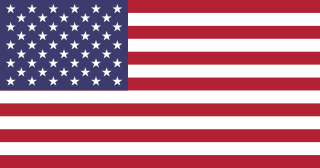 W
WThe flag of the United States of America, often referred to as the American flag or the U.S. flag, is the national flag of the United States. It consists of thirteen equal horizontal stripes of red alternating with white, with a blue rectangle in the canton bearing fifty small, white, five-pointed stars arranged in nine offset horizontal rows, where rows of six stars alternate with rows of five stars. The 50 stars on the flag represent the 50 states of the United States of America, and the 13 stripes represent the thirteen British colonies that declared independence from the Kingdom of Great Britain, and became the first states in the U.S. Nicknames for the flag include the Stars and Stripes, Old Glory, and the Star-Spangled Banner.
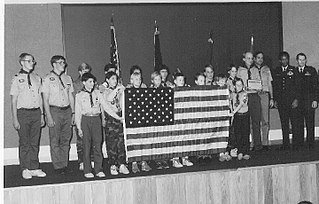 W
WThe Challenger flag is an American flag that was placed in the flight kit of Space Shuttle Challenger for mission STS-51-L. The flag was sponsored by Boy Scout Troop 514 of Monument, Colorado, whose Scoutmaster was William "Bill" Tolbert, a major in the United States Air Force assigned to the Space Command.
 W
WThe National Geodetic Survey (NGS), formerly the United States Survey of the Coast (1807–1836), United States Coast Survey (1836–1878), and United States Coast and Geodetic Survey (USC&GS) (1878–1970), is a United States federal agency that defines and manages a national coordinate system, providing the foundation for transportation and communication; mapping and charting; and a large number of applications of science and engineering. Since its foundation in its present form in 1970, it has been part of the National Oceanic and Atmospheric Administration (NOAA), of the United States Department of Commerce.
 W
WThe Colton Liberty Flag is an American flag which was flown continuously over Mount Slover in Colton, California, United States. The flag was first raised and illuminated by the California Portland Cement Company as part of an Independence Day celebration in Colton the night of July 4, 1917, as a sign of patriotism during the entrance of the United States into World War I. At the time it was one of only three locations in the United States permitted to fly the flag at night.
 W
W"Come and take it" is a historic slogan, first used in 480 BC in the Battle of Thermopylae as "Molon labe" by Spartan King Leonidas I as a defiant answer and last stand to the surrender demanded by the Persian Army, and later in 1778 at Fort Morris in the Province of Georgia during the American revolution, and in 1835 at the Battle of Gonzales during the Texas Revolution.
 W
WThe ensign of the United States is the flag of the United States when worn as an ensign. International maritime law—see International Treaty on Law of the Sea, articles 91 and 92—provides that vessels have a "national character" and thus should display a flag (ensign) that corresponds to this national character, especially when in international or foreign waters. Vessels that are formally documented under the federal vessel documentation act, vessels owned by government bodies in the United States, and vessels in the U.S. military unquestionably have U.S. national character, and thus properly hoist a U.S. ensign to show their national character. Vessels that are numbered by the states and small, non-registered craft owned by U.S. citizens and not registered in other countries may also hoist a U.S. ensign to show their national character.
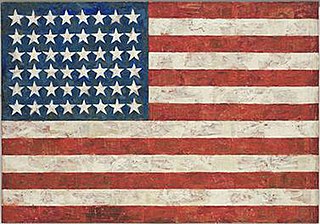 W
WFlag is an encaustic painting by the American artist Jasper Johns. Created when Johns was 24 (1954–55), two years after he was discharged from the US Army, this painting was the first of many works that Johns has said were inspired by a dream of the U.S. flag in 1954. It is arguably the painting for which Johns is best known.
 W
WThe Flag Acts are three laws that sought to define the design of the flag of the United States. All the submitted suggestions were remarkably short, the shortest being a sentence of 31 words, and the longest being a title and two sentences of 117 words.
 W
WThe United States Flag Code establishes advisory rules for display and care of the national flag of the United States of America. It is Chapter 5 of Title 4 of the United States Code. This is a U.S. federal law, but only suggests voluntary customs for handling of the American flag and was never intended to be enforceable. The code uses non-binding language like "should" and "custom" throughout and does not prescribe any penalties for failure to follow the guidelines.
 W
WIn the United States, Flag Day is celebrated on June 14. It commemorates the adoption of the flag of the United States on June 14, 1777, by resolution of the Second Continental Congress. The Flag Resolution, passed on June 14, 1777, stated: "Resolved, That the flag of the thirteen United States be thirteen stripes, alternate red and white; that the union be thirteen stars, white in a blue field, representing a new constellation."
 W
WThe Star-Spangled Banner Flag House, formerly the Flag House & Star-Spangled Banner Museum, is a museum located in the Jonestown/Old Town and adjacent to Little Italy neighborhoods of eastern downtown Baltimore, Maryland, United States.
 W
WThe White House in Washington, D.C., is the official residence of the president of the United States. Being the official residence of the U.S. head of state, it flies the U.S. flag from a flagpole on its rooftop. The U.S. flag is flown there 24 hours a day and seven days a week.
 W
WThe Fort Sumter Flag is a historic United States flag with a distinctive, diamond-shaped pattern of 33 stars. When the main flagpole was felled by a shot during the bombardment of Fort Sumter by Confederate forces, Second Lieutenant Norman J. Hall rushed to retrieve the flag and remount it on a makeshift pole. The flag was lowered by Major Robert Anderson on April 13, 1861 when he surrendered Fort Sumter, in the harbor of Charleston, South Carolina, at the outset of the American Civil War.
 W
WThe Freedom to Display the American Flag Act of 2005 is an Act of Congress that prohibits condominium associations and real estate management organizations from restricting homeowners from displaying the flag of the United States on their property.
 W
WThe Gadsden flag is a historical American flag with a yellow field depicting a timber rattlesnake coiled and ready to strike. Beneath the rattlesnake are the words: "Dont Tread on Me". Some modern versions of the flag include an apostrophe.
 W
WThe George Rogers Clark Flag is a red and green striped banner in the model of American Flags commonly associated with George Rogers Clark, although Colonel Clark did not campaign under these colors. The "Clark" flag was made in Vincennes, Indiana, and likely flew over Fort Sackville even before Clark arrived.
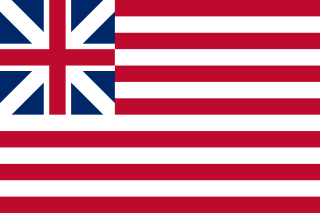 W
WThe "Grand Union Flag" is considered to be the first national flag of the United States of America.
 W
WThe Green Mountain Boys flag, also known as the Stark flag, is a reconstruction of a regimental flag commonly stated to have been used by the Green Mountain Boys. A remnant of a Green Mountain Boys flag, originally belonging to John Stark, is owned by the Bennington Museum. It still exists as one of the few regimental flags from the American Revolution. Although Stark was at the Battle of Bennington and likely flew this flag, the battle has become more commonly associated with the Bennington flag, which is believed to be a 19th-century banner.
 W
WThe flag of the Hopi Nation is used by the Native American Hopi people of Arizona in the United States who live on the Hopi Reservation. The flag is a vertical tricolour of turquoise, white, and yellow, with the Hopi symbol in the middle. The flag is accompanied by a red fringe. The Hopi reservation is completely surrounded by the Navajo Nation.
 W
WThe Juneteenth flag is a flag that marks Juneteenth. It was created in 1997 and first flown in 2000.
 W
WThe Lincoln assassination flags were the five flags which decorated the presidential box of Ford's Theatre, and which were present during John Wilkes Booth's assassination of U.S. President Abraham Lincoln on April 14, 1865. Lincoln and his wife, Mary Todd Lincoln, were in this box watching a production of Our American Cousin. Booth's spur was allegedly caught by one of the flags when he began his escape from the theatre and broke his leg; this part of the story, however, is disputed. Three of the flags were American flags and the other two were Treasury Guard flags. According to Civil War historians, three of these five original flags are currently accounted for.
 W
WThe Lunar Flag Assembly (LFA) was a kit containing a flag of the United States designed to be erected on the Moon during the Apollo program. Six such flag assemblies were planted on the Moon. The nylon flags were hung on telescoping staffs and horizontal bars constructed of one-inch anodized aluminum tubes. The flags were carried on the outside of the Apollo Lunar Module (LM), most of them on the descent ladder inside a thermally insulated tubular case to protect them from exhaust gas temperatures calculated to reach 2,000 °F (1,090 °C). The assembly was designed and supervised by Jack Kinzler, head of technical services at the Manned Spacecraft Center (MSC) in Houston, Texas. Six of the flags were ordered from a government supply catalog and measured 3 by 5 feet ; the last one planted on the Moon was the slightly larger, 6-foot (1.8 m)-wide flag which had hung in the MSC Mission Operations Control Room for most of the Apollo program.
 W
WKatrina Wolf Murat was a German-born American pioneer. She was the first European woman in Denver, and the maker of the first United States flag in Colorado.
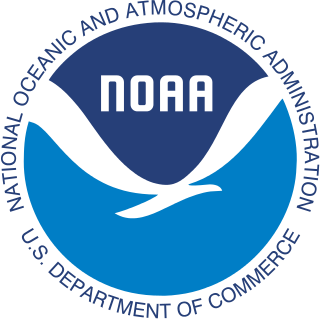 W
WThe National Oceanic and Atmospheric Administration is an American scientific and regulatory agency within the United States Department of Commerce that forecasts weather, monitors oceanic and atmospheric conditions, charts the seas, conducts deep sea exploration, and manages fishing and protection of marine mammals and endangered species in the U.S. exclusive economic zone.
 W
WOld Glory is a nickname for the flag of the United States. The original "Old Glory" was a flag owned by the 19th-century American sea captain William Driver, who flew the flag during his career at sea and later brought it to Nashville, Tennessee, where he settled. Driver greatly prized the flag and ensured its safety from the Confederates, who attempted to seize the flag during the American Civil War. In 1922, Driver's daughter and niece claimed to own the original "Old Glory," which became part of the collection of the Smithsonian Institution, where it remains at the National Museum of American History.
 W
WThe Pan-African flag—also known as the Afro-American flag, Black Liberation flag, UNIA flag and various other names—is a tri-color flag consisting of three equal horizontal bands of red, black and green. The Universal Negro Improvement Association and African Communities League (UNIA-ACL) formally adopted it on August 13, 1920, in Article 39 of the Declaration of the Rights of the Negro Peoples of the World, during its month-long convention at Madison Square Garden in New York City. Variations of the flag can and have been used in various countries and territories in the Americas to represent Garveyist ideologies.
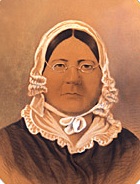 W
WMary Pickersgill was the maker of the Star Spangled Banner Flag hoisted over Fort McHenry during the Battle of Baltimore in the War of 1812. The daughter of another noted flag maker, Rebecca Young, Pickersgill learned her craft from her mother, and, in 1813, was commissioned by Major George Armistead to make a flag for Baltimore's Fort McHenry that was so large that the British would have no difficulty seeing it from a great distance. The flag was installed in August 1813, and, a year later, during the Battle of Baltimore, Francis Scott Key could see the flag while negotiating a prisoner exchange aboard a British vessel, and was inspired to pen the words that became the United States National Anthem.
 W
WThe Pledge of Allegiance of the United States is an expression of allegiance to the flag of the United States and the republic of the United States of America. Such a pledge was first composed, with a text different from the one used at present, by Captain George Thatcher Balch, a Union Army Officer during the Civil War and later a teacher of patriotism in New York City schools. The form of the pledge used today was largely devised by Francis Bellamy in 1892, and formally adopted by Congress as the pledge 50 years later, in 1942. The official name of The Pledge of Allegiance was adopted in 1945. The most recent alteration of its wording came on Flag Day in 1954, when the words "under God" were added.
 W
WRaising the Flag at Ground Zero is a photograph by Thomas E. Franklin of The Record newspaper of Bergen County, New Jersey, taken on September 11, 2001. The picture shows three New York City firefighters raising the U.S. flag at Ground Zero of the World Trade Center, following the September 11 attacks. The official names for the photograph used by The Record are Firefighters Raising Flag and Firemen Raising the Flag at Ground Zero. The photo appeared on The Record front page on September 12, 2001. The paper also put it on the Associated Press wire and it appeared on the covers of several newspapers around the world. It has often been compared to the Raising the Flag on Iwo Jima photograph taken by Joe Rosenthal during World War II.
 W
WRaising the Flag on Iwo Jima is an iconic photograph of six United States Marines raising the U.S. flag atop Mount Suribachi during the Battle of Iwo Jima in the final stages of the Pacific War. The photograph, taken by Joe Rosenthal of the Associated Press on February 23, 1945, was first published in Sunday newspapers two days later and reprinted in thousands of publications. It was the only photograph to win the Pulitzer Prize for Photography in the same year as its publication, and was later used for the construction of the Marine Corps War Memorial in 1954, which was dedicated to honor all Marines who died in service since 1775. The memorial, sculpted by Felix de Weldon, is located in Arlington Ridge Park, near the Ord-Weitzel Gate to Arlington National Cemetery and the Netherlands Carillon. The photograph has come to be regarded in the United States as one of the most significant and recognizable images of World War II.
 W
WThe Star-Spangled Banner, or the Great Garrison Flag, was the garrison flag that flew over Fort McHenry in Baltimore Harbor during the naval portion of the Battle of Baltimore during the War of 1812. It is on exhibit at the National Museum of American History, Smithsonian Institution. Seeing the flag flying over Fort McHenry on the morning of September 14, 1814, after the battle ended, Francis Scott Key was inspired to write the poem "Defence of Fort M'Henry". These words were written by Key and set to the tune of "To Anacreon in Heaven" by John Stafford Smith, a popular song at the time. It was not until 1931 that the song became the national anthem of the United States.
 W
WThe Flag is a painting by Georgia O'Keeffe (1918), that represents her anxiety about her brother being sent to fight in Europe during World War I, a war that was particularly controversial and dangerous due to its use of new modern weapons and tactics, like the machine gun, mustard gas, naval mines and torpedoes, high-powered artillery guns, and combat aircraft. Due to government restrictions on the freedom of speech included in the Espionage Act of 1917 the painting was not displayed until 1968. It is in the collection of the Milwaukee Art Museum.
 W
WThree Flags is a 1958 painting by American artist Jasper Johns.